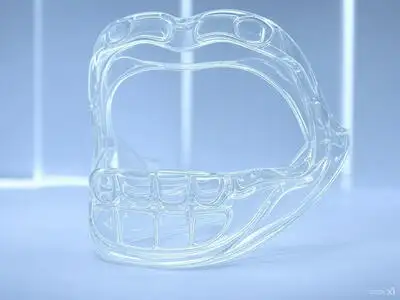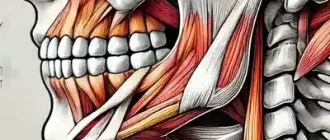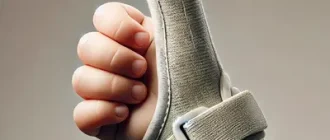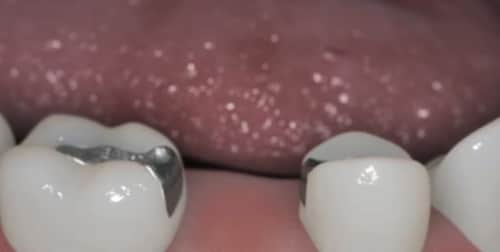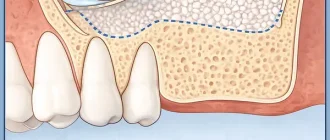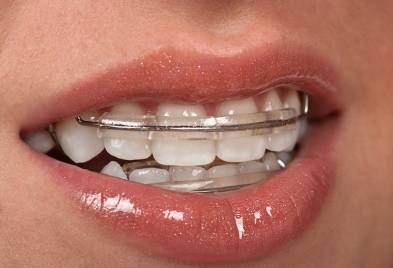If you’ve ever woken up with a sore jaw or a nagging headache, you might be one of the millions dealing with temporomandibular joint (TMJ) issues. Night mouth guards have long been a go-to solution for relieving the pain of jaw clenching and teeth grinding (bruxism), but in 2025, they’re getting a serious upgrade. Thanks to advancements in technology, these devices are no longer just slabs of plastic you pop in your mouth—they’re becoming smarter, more comfortable, and tailored to your unique needs.
Effectiveness of Night Mouth Guards for TMJ Pain Relief
| Pain Relief Level | Percentage (%) |
|---|---|
| Significant Pain Relief | 60% |
| Moderate Pain Relief | 25% |
| Slight Pain Relief | 10% |
| No Relief | 5% |
This chart shows the percentage of TMJ sufferers reporting different levels of pain relief after using night mouth guards. A majority experience significant relief, while a smaller percentage report moderate or slight improvements.
1. 3D-Printed Precision: A Perfect Fit Every Time
One of the biggest game-changers in TMJ treatment is the rise of 3D printing. Imagine a night guard that’s not just custom-made but sculpted to the tiniest contours of your teeth with laser-like accuracy. Companies like Chomper Labs and SportingSmiles are at the forefront of this revolution. Using advanced scanning and printing tech, they create guards that hug your teeth like a second skin, reducing pressure on your TMJ while maximizing comfort.
- How It Works: You take a dental impression at home with a kit (or get a digital scan at a dentist), send it off, and a 3D printer crafts your guard layer by layer. The result? No more awkward adjustments or ill-fitting edges.
- Example: Chomper Labs’ Ultra Thin Night Guard (about $149) is a 1mm-thick marvel—perfect for light grinders who want daytime relief too. SportingSmiles offers the Flexible Super Hard Night Guard for heavy bruxers at around $120, blending durability with a snug fit.
- Why It’s Cool: These guards cut down on the trial-and-error of traditional molding, and the precision can mean faster relief from TMJ pain.
2. Smart Mouth Guards: Tracking Your Jaw’s Every Move
What if your night guard could tell you why your jaw hurts? Enter smart mouth guards—devices embedded with tiny sensors that monitor your clenching and grinding habits. Though still in early stages, brands like Sleepette and research teams at universities (think MIT’s biomechanics labs) are pushing this tech forward.
- How It Works: Sensors track muscle activity and pressure, syncing data to an app on your phone. You wake up with a report: “You clenched 47 times last night—here’s where it spiked.”
- Example: Sleepette’s prototype (not yet priced, expected around $250-$300) aims to cater to women with TMJ, using sensors to pinpoint stress-related clenching patterns. It’s like a Fitbit for your jaw!
- Why It’s Cool: Dentists can use this data to tweak your treatment—maybe you need a softer guard or therapy for stress. Plus, it’s empowering to see what’s happening while you sleep.
3. Hybrid Materials: Comfort Meets Strength
Gone are the days of choosing between a rock-hard guard or a flimsy one that wears out fast. New hybrid materials are blending soft interiors with tough exteriors, giving TMJ sufferers the best of both worlds. Pro Teeth Guard and JS Dental Lab are leading this charge with guards that feel like a cushion but stand up to serious grinding.
- How It Works: A soft inner layer (often silicone-based) cradles your teeth, while a hard outer shell (like acrylic) takes the brunt of your bite force. It’s like armor with a cozy lining.
- Example: Pro Teeth Guard’s Hybrid Night Guard ($179.99) is 2mm thick and perfect for moderate grinders. JS Dental Lab’s Dual Laminate Guard ($189) ups the ante with extra durability for heavy-duty TMJ cases.
- Why It’s Cool: These guards reduce jaw strain without that bulky feel—great for people who’ve ditched older models because they felt like chewing on a tire.
4. Microwave-and-Bite Tech: Quick Customization
Not everyone has time for lab-made guards, and that’s where “microwave-and-bite” technology shines. Brands like Oral-B are innovating here, offering guards you soften in a microwave for a custom fit in minutes—no boiling pots required.
- How It Works: Pop the guard in the microwave for 30-60 seconds, let it cool slightly, then bite down to mold it. It’s fast, easy, and surprisingly effective for TMJ relief.
- Example: Oral-B’s Nighttime Dental Guard with Scope ($25-$30 at drugstores) isn’t fully custom but adapts well enough to ease mild TMJ symptoms. It’s a budget-friendly entry point to see if guards work for you.
- Why It’s Cool: It’s a low-stakes way to test the waters, especially if you’re not ready to drop $100+ on a lab-crafted option.
5. Multifunctional Designs: TMJ Meets Snoring Solutions
Why settle for just TMJ relief when you can tackle snoring too? New hybrid guards—like those from Zyppah—combine jaw stabilization with airway management, making them a two-for-one deal for couples tired of nighttime noise.
- How It Works: These guards hold your jaw forward to keep airways open (reducing snoring) while protecting your TMJ from clenching stress.
- Example: Zyppah’s Anti-Snoring Mouth Guard ($119.95) uses a tongue strap and boil-and-bite tech. It’s not the sleekest, but users rave about quieter nights and less jaw pain.
- Why It’s Cool: It’s a practical fix for the 40% of TMJ sufferers who also snore, per recent sleep studies—talk about multitasking!
Costs at a Glance
- Budget: Oral-B Nighttime Dental Guard ($25-$30) – OTC, good for beginners.
- Mid-Range: SportingSmiles Flexible Super Hard ($120), Chomper Labs Ultra Thin ($149) – Custom, great value.
- Premium: Pro Teeth Guard Hybrid ($179.99), JS Dental Lab Dual Laminate ($189) – High-end custom options.
- Future Tech: Sleepette Smart Guard ($250-$300 est.) – Cutting-edge, still emerging.
Real-Life Impact: A User Story
Take the woman, a 34-year-old graphic designer from Seattle. She’d been waking up with jaw pain for years, chalking it up to stress. Her dentist suggested a night guard, but the generic boil-and-bite model felt bulky and didn’t help much. Then she tried Chomper Labs’ 3D-printed Ultra Thin guard. “It’s like it was made for me—because it was,” she says. Within two weeks, her headaches faded, and she could chew breakfast without wincing. Now, she’s eyeing a smart guard to track her progress. “It’s wild to think my mouth guard could talk to my phone,” she laughs.
Prevalence of TMJ Symptoms Among Night Mouth Guard Users
| TMJ Symptom | Prevalence (%) |
|---|---|
| Jaw Pain | 70% |
| Headaches | 50% |
| Teeth Grinding | 85% |
| Jaw Clicking | 40% |
This chart highlights the most common TMJ symptoms alleviated by night mouth guards. Teeth grinding is the most frequently reported issue, followed by jaw pain and headaches.
What’s Next?
The future of TMJ night guards is buzzing with potential. Imagine guards that adjust their firmness based on your bite force, or ones made from eco-friendly, biodegradable materials (a nod to sustainability trends). For now, these innovations are making TMJ relief more accessible and effective than ever. Whether you’re a light grinder or a chronic clencher, there’s a high-tech guard out there waiting to give your jaw a break—and maybe even save your mornings.
Durability of Night Mouth Guards for TMJ Users
| Mouth Guard Type | Lifespan (Months) |
|---|---|
| Soft Guards | 6 months |
| Hybrid Guards | 12 months |
| Hard Guards | 18 months |
| 3D-Printed Guards | 24 months |
This chart shows the average lifespan of different night mouth guard types for TMJ users. 3D-printed guards last the longest, while soft guards have the shortest lifespan.
So, ready to upgrade your sleep? Chat with your dentist or browse these brands online. Your jaw will thank you—and who knows, you might just wake up to a whole new smile.
